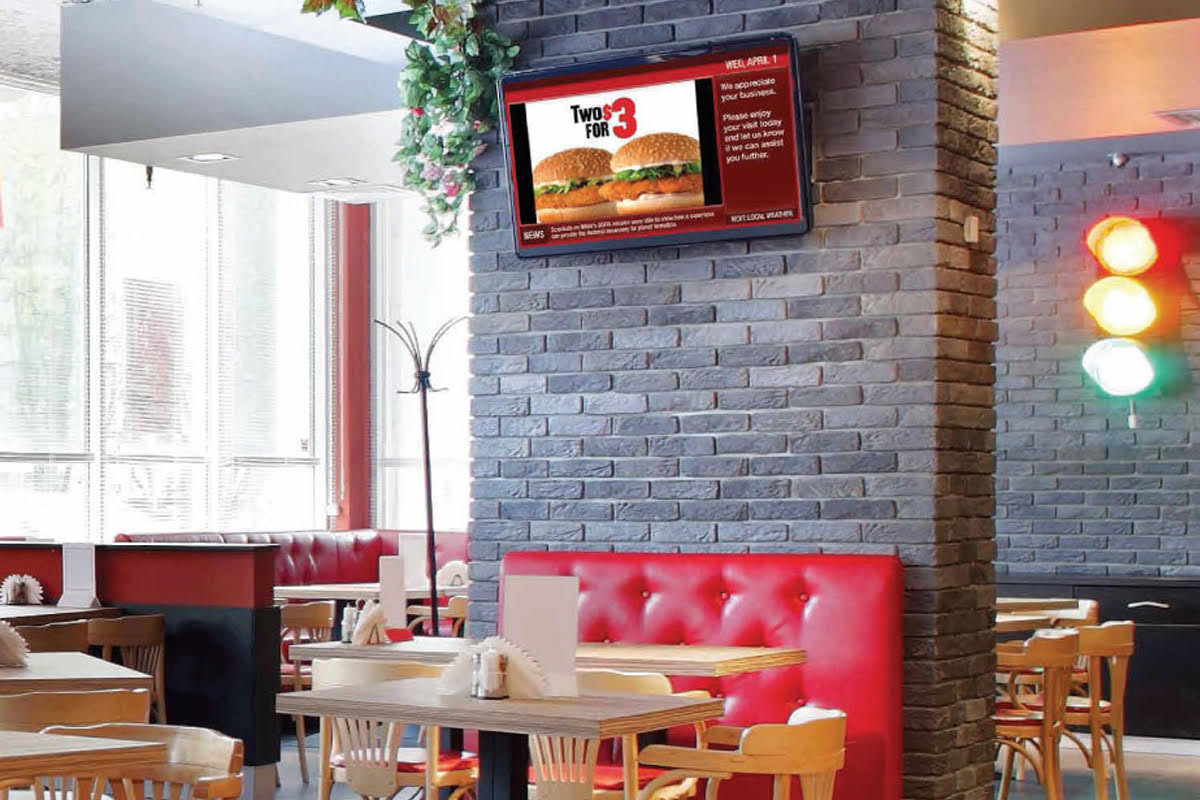Sponsored by Mood Media.
In an increasingly competitive visual market, digital signs have become a valuable branding tool for quick-service restaurants. The signs, which are customizable and can be updated quickly as information changes, provide a sophisticated way for restaurateurs to communicate with their guests. In the 2019 Restaurant Success Report recently published by Toast, 73 percent of diners surveyed responded that restaurant technology improves their customer experience.
Digital signs, which are becoming more affordable, are a way for operators to differentiate their restaurant environment, improve business efficiency, target customers, and maximize sales through sophisticated content that informs and engages the audience while also promoting profitable consumer behavior.
“Digital marketers are constantly talking about providing the right content to the right audience at the right time,” says Sumter Cox, senior director of marketing and communications at digital signage provider Mood Media. “That same perspective is applicable to brick and mortar restaurants, where digital signage can ensure that every stage of the customer journey will be more relevant, engaging, and productive.”
Placing screens strategically within a restaurant is essential to effecting returns. Cox identifies three critical visual touch points in quick service restaurants where digital signs can provide particular benefit: the entrance, the menuboards, and the dining room.
1. Entrance
First impressions go a long way, and digital signs installed in a restaurant’s entry can entice prospective customers to come inside, as well as welcome them with content that highlights special promotions or celebrates the brand’s local community involvement.
“Digital signage builds awareness and reputation,” says Brian Elles, Mood Media’s director of product marketing. “It conveys brand information and purchase opportunities before customers decide on their order.”
2. Menuboards
In addition to the flexibility of immediately updating changes, compared with printed materials, digital menuboards provide restaurateurs with the opportunity to highlight specials and promote high-margin offerings. “You can also target the message to the meal,” Elles says. “Digital signs enable tailored messaging for different dayparts, so operators can display the most relevant content.”
For example, quick-service restaurants with different offerings based on time of day could display breakfast sandwiches and coffee items during the morning rush and change to sandwiches or salads later in the day. Digital signs are also a great way to upsell desserts or drink specials and promote seasonal offerings or nightly specials that will encourage guests to return.
3. Dining Room
The dining room is a critical space to engage customers even after they’ve purchased their meal, Cox says, because operators can use screens to “create a balance of content that entertains, informs and promotes while eliminating competitor ads and other inappropriate content.”
Keeping guests’ attention while they dine is important to maintaining their engagement with a brand and it’s a particularly productive time because they are typically stationery with fewer distractions.
Tony Treadway, president of Creative Energy—an advertising agency committed to the foodservice segment—recommends rotating content in the dining room between menu offerings and entertainment items such as trivia questions, sports scoreboards, or promotions for local charity initiatives with which the restaurant is involved.
“This keeps customers engaged with your brand longer and less with their smartphones,” Treadway says. “It’s also useful in posting job openings and career opportunities.”
By installing digital signage at these critical visual touch points, quick service restaurateurs will be able to capture customer attention and keep guests engaged with their brand for as long as possible. Used effectively, screens offer the opportunity to communicate with consumers at a high level by providing only the most relevant and strategic content throughout the restaurant and throughout the day. And that’s a powerful combination.
By Erin McPherson













